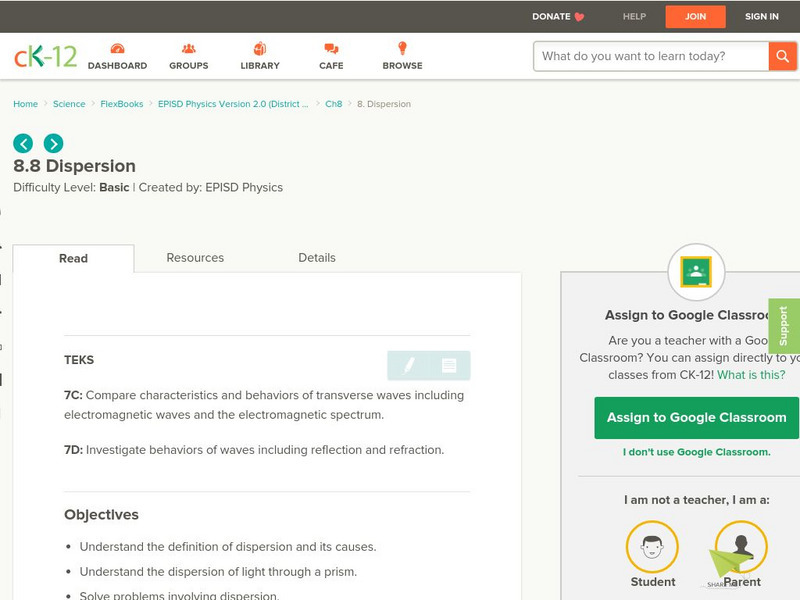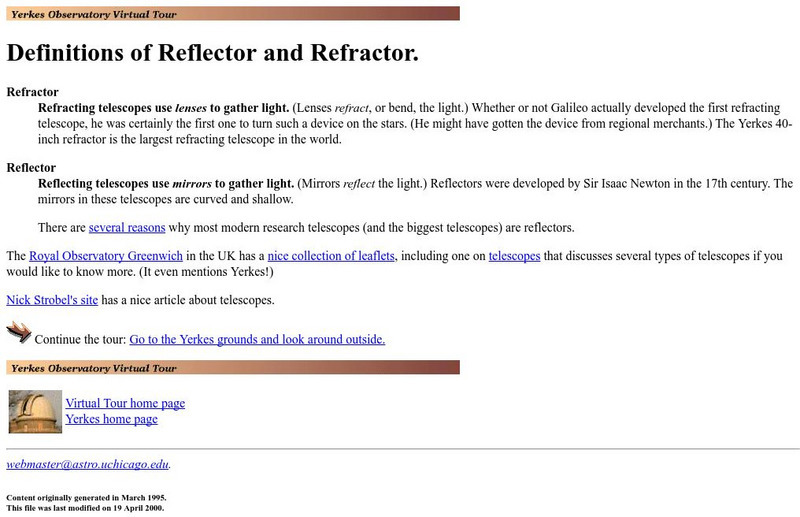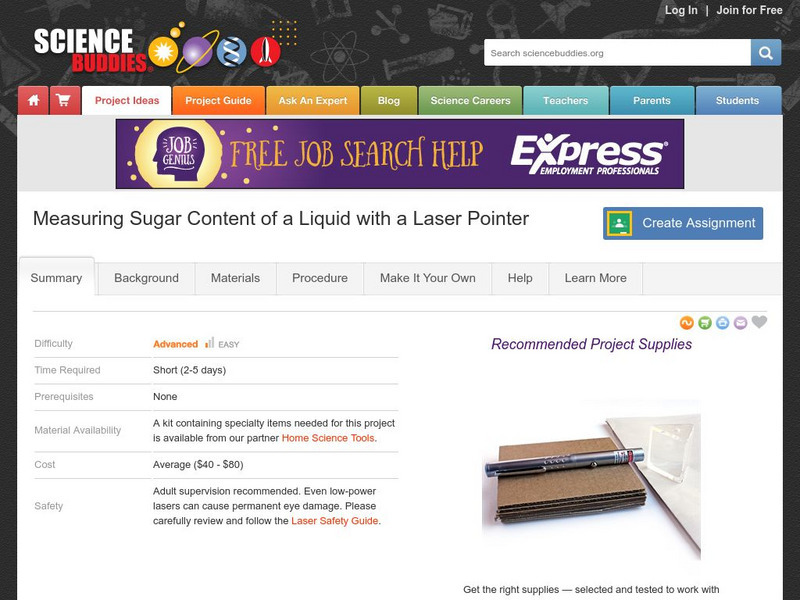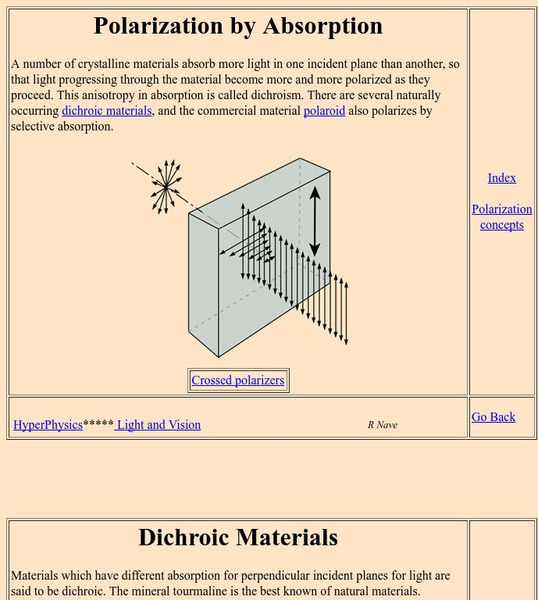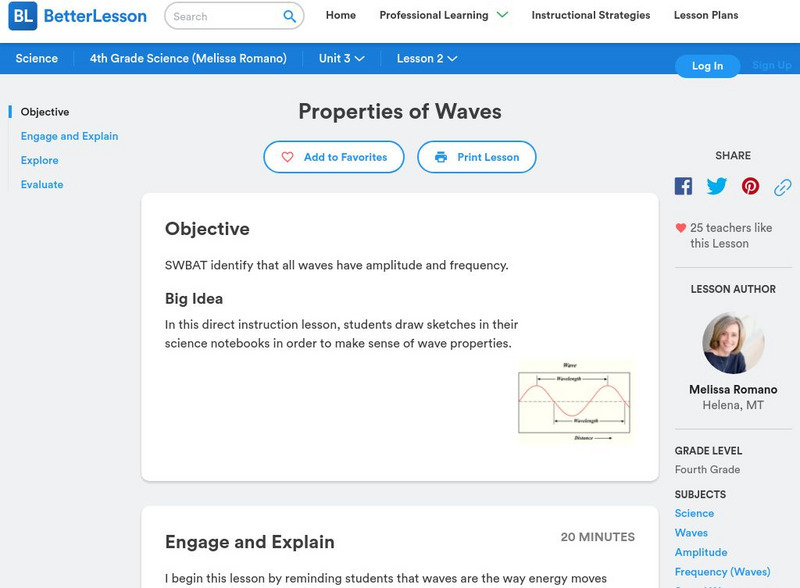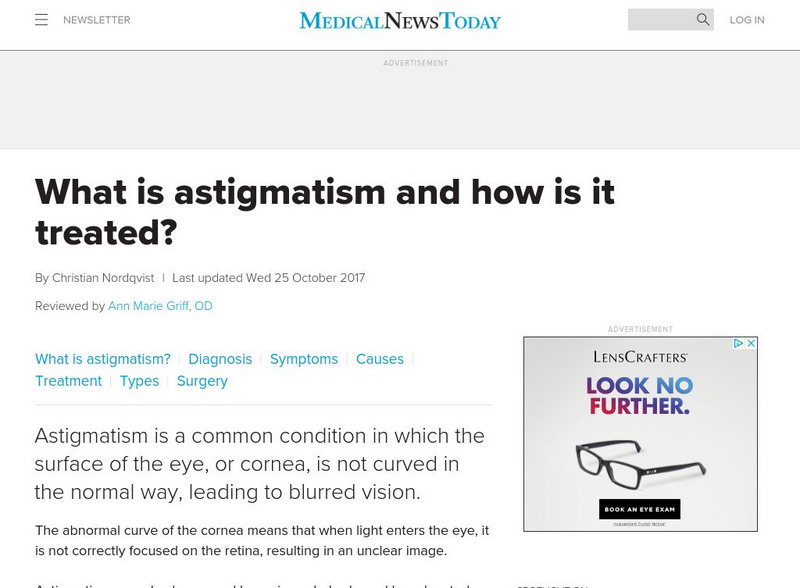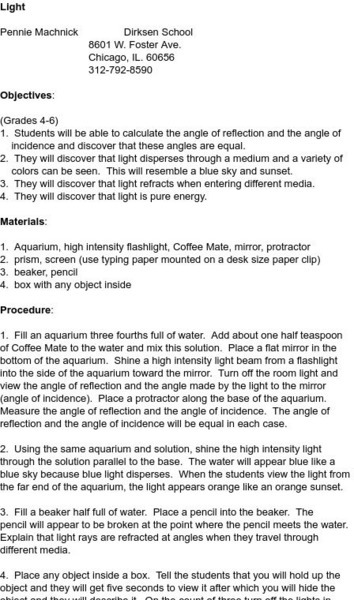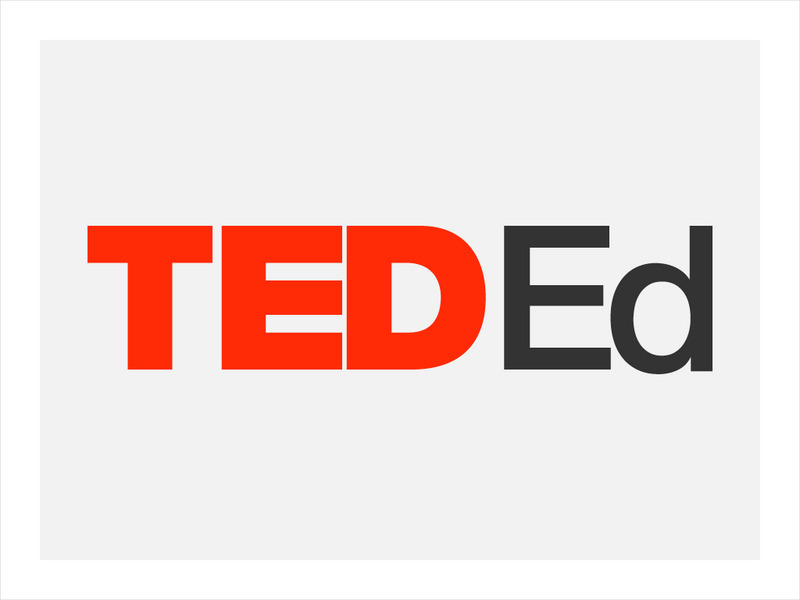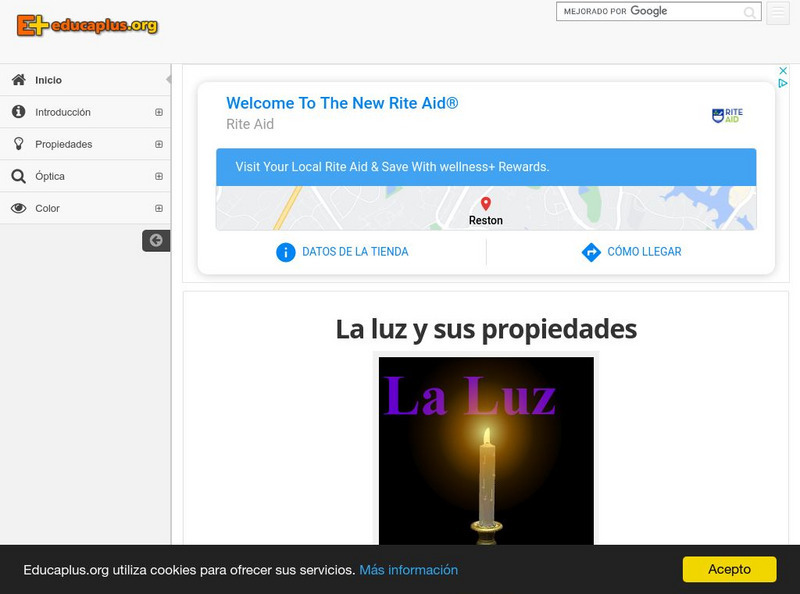CK-12 Foundation
Ck 12: Dispersion
[Free Registration/Login may be required to access all resource tools.] Students investigate the dispersion of light through a prism and solve practice problems involving this phenomenon.
BBC
Bbc: Gcse Bitesize: General Properties of Waves
Light travels as waves. Waves can be described by their amplitude, wavelength and frequency. The speed of a wave can be calculated from its frequency and wavelength.
Optical Society
Optical Society of America: Optics for Kids: Blue Sky Red Sunset
An experiment where light is shone through a bottle of water, and then milk added, to see how this affects the path the light takes (with links to articles on reflection and refraction that explain what is happening).
Science Education Resource Center at Carleton College
Serc: Mn Step: Why Is the Sky Blue?
Students will learn about refraction and the scattering of sunlight as it enters the atmosphere, which causes the colors in light to separate, giving us blue skies and colorful sunrises and sunsets.
University of Chicago
University of Chicago: Reflector and Refractor
From the Yerkes Observatory Virtual Tour web site. Compares and contrasts reflecting and refracting telescopes. A link from the page leads to a second page which explains why most modern research telescopes are reflecting telescopes.
Optical Society
Optical Society of America: Optics for Kids: Interference in a Ripple Tank
An investigation, using a ripple tank, into how waves behave when they collide with each other. With an explanation of what is observed, and a link to an article on refraction.
York University
The Joy of Visual Perception: Physics of Visual Stimulus
From an online "book," this particular page describes physics principles related to vision and sight. Keywords are linked to other pages with further information. The role of sunglasses in blocking glare is discussed and explained. A...
TeachEngineering
Teach Engineering: When Silicon Talks
In this activity, students tackle this aspect of engineering as they solve problems for precise angles and speeds, and predict data output when samples are altered.
Discovery Education
Discovery Education: 3 M Young Scientist Lab: Disappearing Glass
Glass objects seem to disappear when placed in cooking oil.
Discovery Education
Discovery Education: 3 M Young Scientist Lab: Gelatin Optic Fibers
Strips of gelatin dessert and a laser pointer demonstrate total internal reflection.
Science Buddies
Science Buddies: Measuring Sugar Content of a Liquid With a Laser Pointer
Here's a project that shows you how to use a laser pointer and some knowledge of physics to figure out the concentration of sugar dissolved in a liquid.
Georgia State University
Georgia State University: Hyper Physics: Polarization by Absorption
The operation of Polaroid filters on a pair of sunglasses is shown.
Better Lesson
Better Lesson: Properties of Waves
In this direct instruction lesson, students draw sketches in their science notebooks in order to make sense of wave properties. Resources include a slideshow presentation on the properties of waves and multiple examples of student work.
Florida State University
Florida State University: Science, Optics & You: Willebrord Snell
Biography of Willebrord Snell (1580-1626), a Dutch mathematician known best for his work in refractive indices.
Exploratorium
Exploratorium: Make Your Own Telescope
At this site students can make their own telescope and see how it works with this experiment. Out of a light, a pair of glasses, a magnifying glass and wax paper.
Physics Classroom
The Physics Classroom: Image Formation for Concave Mirrors Case A
This animation depicts the path of light to each person's eye. Different people are sighting in different directions; yet each person is sighting at the same image location. In this animation the image location is the intersection point...
Healthline Media
Medical News Today: Articles: Eye Health: What Is Astigmatism?
Learn about astigmatism, a type of refractive error where the eye does not bend light properly, thereby causing blurred vision. Also explained are the causes, treatment, and diagnosis of astigmatism.
Florida State University
Florida State University: Science, Optics & You: E Tienne Louis Malus
Biography of Etienne-Louis Malus (1775-1812), a famous French mathematician and physicist, best known for his work in double refraction and in polarization.
Science and Mathematics Initiative for Learning Enhancement (SMILE)
Smile: Light
For this activity, students actually find the angles of reflection and incidence.
TED Talks
Ted: Ted Ed: How Do Glasses Help Us See?
Today, glasses help millions of people with poor vision be able to see clearly. But how? Andrew Bastawrous and Clare Gilbert help unravel the answer by explaining refraction- the ability of a transparent medium, like glass, water, or the...
Better Lesson
Better Lesson: Waves Performance Assessment Part 2
Students will use tools and materials to design and build a device that uses light or sound to solve the problem of communicating over a distance. Resources included are videos of the lesson in action, a student worksheet, and an...
Educaplus (Jesús Peñas Cano)
Educaplus: La Luz
What do you know about light? Learn about it through this interactive site. At the end you can take a test to test your knowledge. A scientific calculator is also provided.
Cosmo Learning
Cosmo Learning: Applied Science and Technology 210: Electrical Engineering
A collection of video lectures from a course that explores the application of electrical engineering topics. Webpage includes twenty-eight lectures from a professor at the University of California, Berkeley. Lectures vary in length and...
